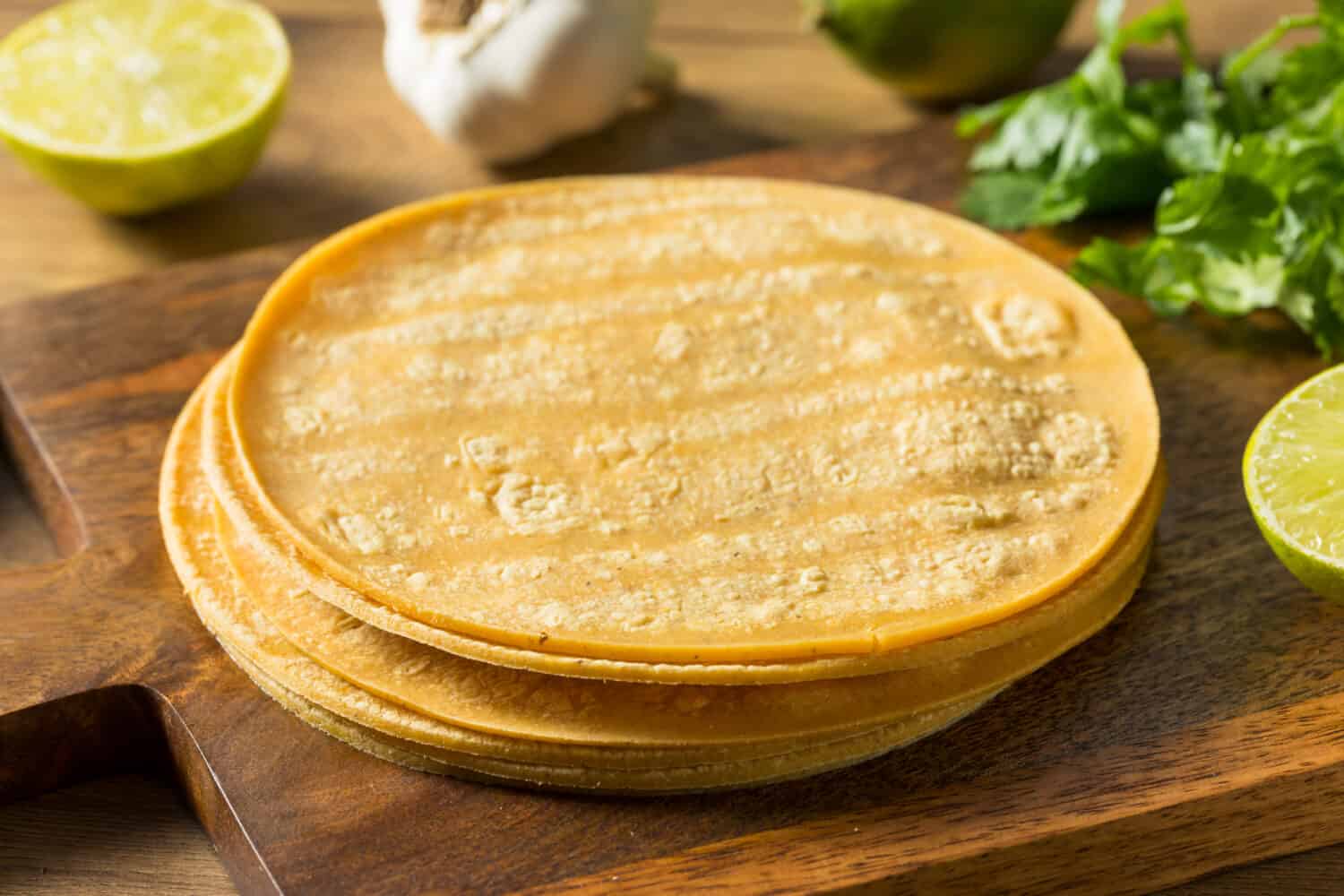Corn Tortilla vs. Flour Tortilla
When it comes to authentic Mexican cuisine, there are many options for making a perfect burrito or taco. One of the main staples is a tortilla. In the simplest form, a tortilla is a flatbread used for various dishes in America and Mexico. Tortillas are very versatile, allowing them to be used as a taco shell or even as a sturdy base for a burrito. However, there are two popular tortillas on the market that you may be wondering about. What exactly is the difference between corn and flour tortillas? Essentially, the primary ingredients are what set these two tortillas apart.
A flour tortilla uses two main ingredients, water and flour. Therefore, it is the easiest of the two to prepare at home. A corn tortilla, on the other hand, uses masa harina, a mixture of ground corn flour and lime. These ingredients can be hard to find, making it trickier to prepare this version of the tortilla at home. This post will explore the nutritional value, differences, and similarities of these two staples prevalent in Mexican cuisine.
Are Corn Tortillas and Flour Tortillas the Same Thing?
Corn and flour tortillas are a form of flatbread used to hold a filling, such as meat and vegetables. Of course, there are other uses for tortillas. Some enjoy dipping them in soups and chilis and making quesadillas or flatbread sandwiches. On the surface, a corn tortilla and a flour tortilla are simply different variations of the same thing, a flatbread. Nevertheless, some primary differences set these two delicious flatbreads apart. We will explore those differences below.
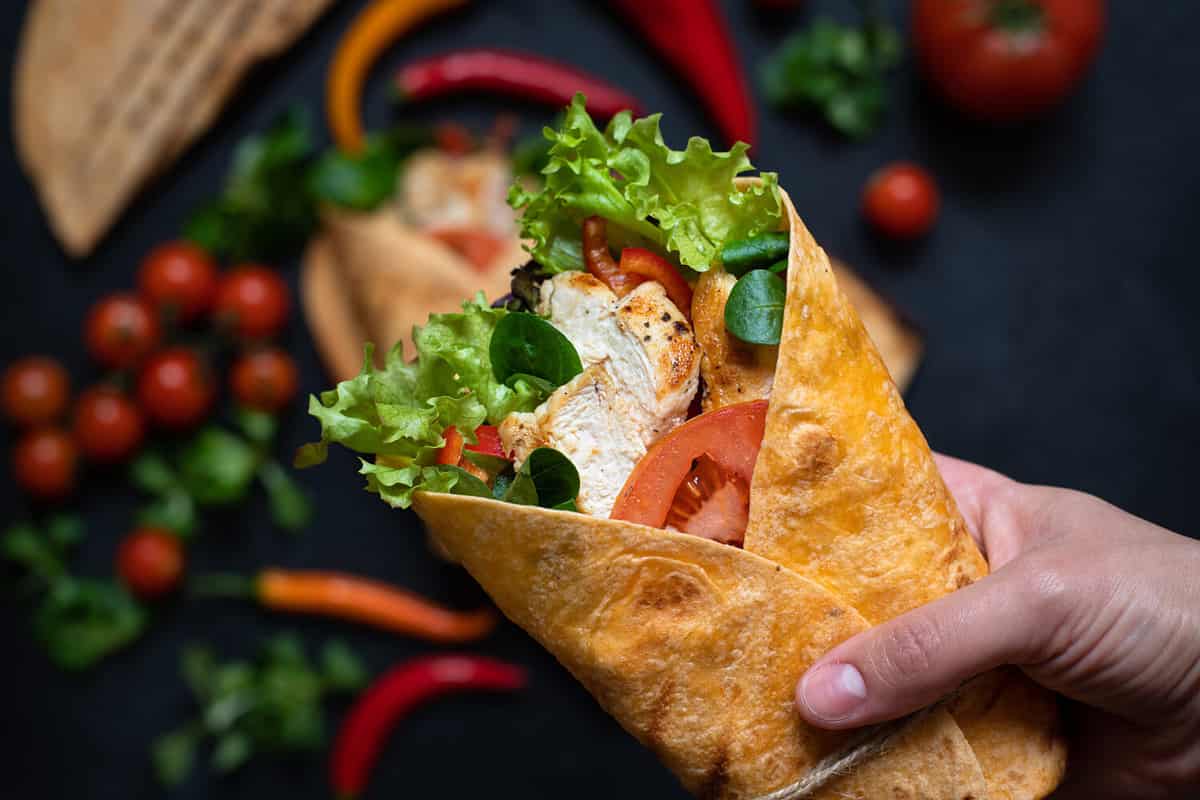
©DariaKM/Shutterstock.com
Corn Tortillas vs. Flour Tortillas: What Is the Difference?
The main difference between corn and flour tortillas is the primary ingredients used to make the two. To create a small flatbread, a corn tortilla uses ground corn flour and lime, which isn't exactly the household lime you may be picturing. A flour tortilla uses flour, water, and salt to form the larger version of these flatbreads. The primary ingredients contribute to the apparent differences between the two as well. A corn tortilla is yellow, while a four tortilla is white.
Corn tortillas are smaller in form because they typically are more fragile. The fragility means it is easier to make a sturdier corn tortilla when smaller. A flour tortilla holds up better than a corn tortilla, making it easier to make these versions larger. A larger flour tortilla may be better for making a burrito than a corn tortilla, which crumbles easier when stuffed full.
When it comes to the nutritional value of these tortillas, a corn tortilla will beat a flour tortilla every time. Of course, healthier versions of a flour tortilla use wheat flour. However, corn tortillas are the healthier counterpart of the two.
Nutritional Value of Corn Tortillas and Flour Tortillas
The clear winner of the nutritional battle between corn and flour tortillas will always be the corn tortilla. Corn tortillas are high in fiber and low in carbs, making them a better option if you want to eat a more nutritious meal. It's also important to pay attention to the nutritional value of the carbs you are taking in. Corn tortillas are made from whole grain, making them a better option for carb intake.
A whole-grain flour tortilla is always available if you enjoy the sturdier option. When using whole grains, fewer nutrients are lost during the processing. At the same time, a regular flour tortilla loses nutritional value during the processing.
What Is a Corn Tortilla?
A corn tortilla is a small flatbread that is a staple across America and Mexico when it comes to Mexican cuisine. Corn tortillas may have been around for thousands of years. It is the oldest form of the tortilla, beating the flour tortilla out by hundreds or possibly thousands of years.
A corn tortilla's staple ingredient is masa harina. Masa harina is a combination of corn flour and lime. Before heading to your grocery store to search for these ingredients, it is important to note that the lime here is not the fruit lime. It is actually calcium hydroxide. Masa harina is what you have when you mix calcium hydroxide with ground corn flour, and it is challenging to find in the grocery store. When you mix the two, the process is nixtamalization. When a tortilla undergoes this process, it becomes more nutritious, unleashing many vitamins.
Corn tortillas tend to be more compact than flour tortillas. The small size is because the mixture is more delicate. The larger the corn tortilla, the more likely it will fall apart when stuffed with the ingredients. Therefore, they are smaller and firmer than a flour tortilla to ensure the tortilla holds. The corn tortilla may appear smaller and more breakable than its flour counterpart but do not discount it as the weaker of the two. On the contrary, the corn tortilla is a valuable contender with its rich history and healthier benefits.
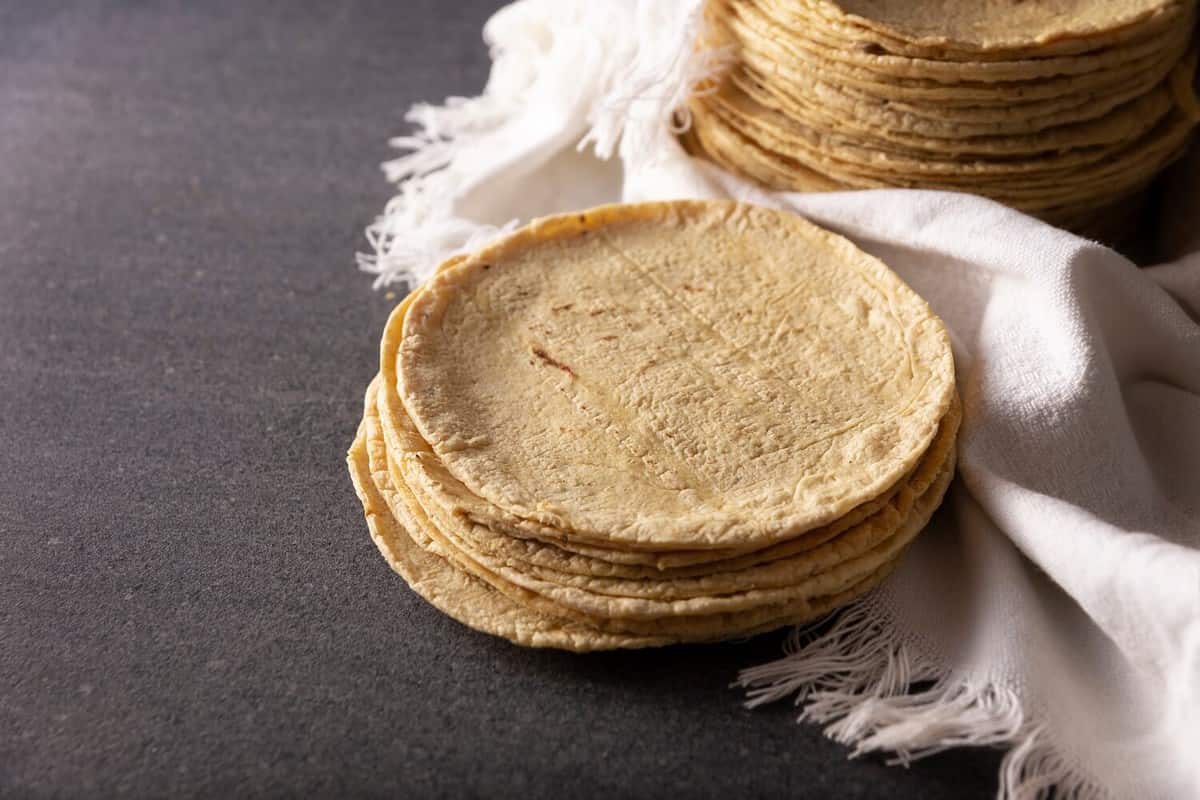
©Sergio Hayashi/Shutterstock.com
What Is a Flour Tortilla?
A flour tortilla arrived on the scene long after the corn tortilla had made its debut. It is a simpler version of the corn tortilla, made from flour and water. You do not need much to make a flour tortilla: flour, water, salt, and a tortilla press. After mixing the flour and water, add a pinch of salt and pour into the flour press. The result is a simple and tasty homemade flour tortilla.
A flour tortilla is larger than a corn tortilla, allowing it to hold more ingredients. Unfortunately, when it comes to nutritional value, a flour tortilla loses. However, if you are looking for a healthier alternative, a wheat flour tortilla will give you identical sturdiness as a flour tortilla while providing better nutrients.
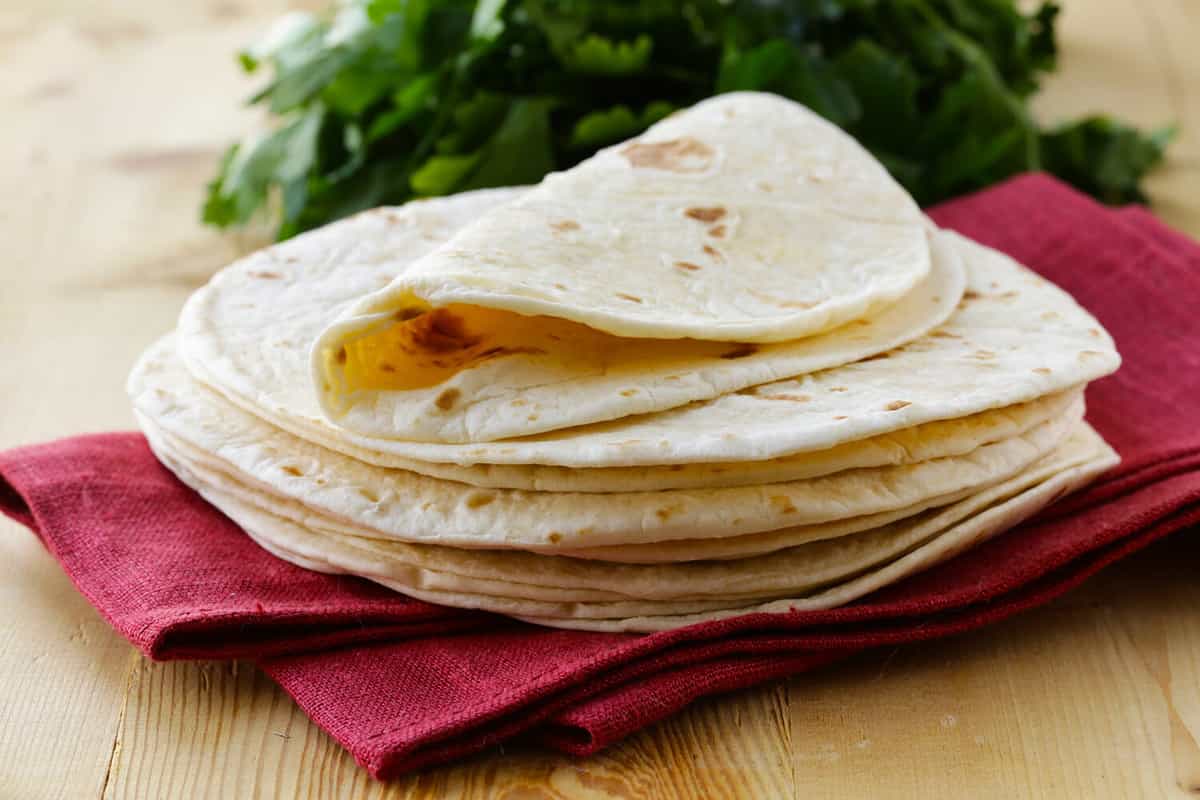
©Dream79/Shutterstock.com
Can You Substitute a Corn Tortilla for Flour Tortilla or Vice Versa?
Whether you use a corn or flour tortilla depends on what your taste buds enjoy. Both a corn tortilla and a flour tortilla are great substitutes for one another. However, if you decide to substitute one for the other, it is essential to remember the taste difference resulting from the primary ingredients used in each. There are also different health benefits between the two, and aside from appearance, the corn tortilla tends to be more fragile and only holds a small amount of meat and vegetables compared to the flour tortilla. Regardless, you can substitute one for the other and have similar results.
In Conclusion
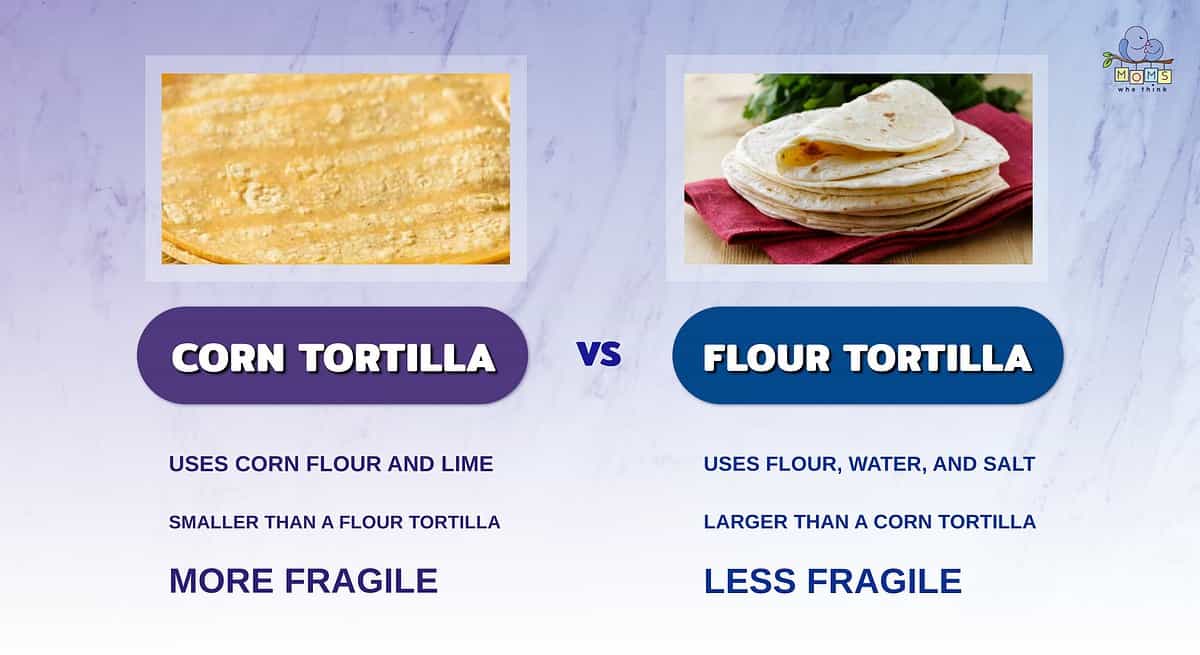
- Corn tortillas use corn flour and lime as their main ingredients, while flour tortillas use a combination of flour, water, and salt. The differences in ingredients are very important when it comes to giving these tortillas their other defining characteristics.
- Corn tortillas are smaller than flour tortillas, meaning they generally can fit less filling.
- Since corn tortillas are on the fragile side, they can't withstand being stuffed full like flour tortillas can. Flour tortillas are best if you want to make a large burrito.
A corn tortilla and a flour tortilla are staples in traditional Mexican cuisine. Corn tortillas are the way to go if you want a healthy option. They may be small and not as sturdy, but they offer a delicious taste and nutritional value that is hard to beat. On the other hand, a flour tortilla is still a great option and is easier to make at home. The ingredients to make a corn tortilla are more challenging to find; however, possible! Whether you want corn or flour tortilla with your next burrito depends entirely on your preference. However, regarding these two delicious flatbreads, either one will help your next meal come to life!

Creamy Halibut Enchiladas
- Yield: 8 servings 1x
Ingredients
- 4 cups water
- 2 pounds halibut, cut into 1-inch cubes
- 6 ounces reduced-fat cream cheese
- 2/3 cup fat-free sour cream
- 4 green onions, chopped
- 2 (4 ounce) cans chopped green chilies
- 1 (4 1/4 ounce) can chopped ripe olives, drained
- 2 jalapeno peppers, seeded and chopped
- 1 1/2 teaspoons ground cumin
- 8 (8 inch) flour tortillas
- 4 1/2 teaspoons all-purpose flour
- 1 1/2 cups fat-free half-and-half cream
- 1 1/4 cups shredded reduced-fat Monterey Jack
- 1/3 cup shredded Parmesan cheese
- 1/2 cup salsa
Instructions
- In a large saucepan, bring water to a boil. Carefully add fish; reduce heat. Cover and simmer for 5 minutes or until fish flakes easily with a fork; drain well.
- In a mixing bowl, combine the cream cheese, sour cream, onions, chilies, olives, jalapenos, and cumin. Fold in fish.
- Place generous ½ cup down center of each tortilla; roll up. Place enchiladas in a 13x9x2-inch baking dish coated with nonstick cooking spray.
- Combine flour and cream until smooth; pour over enchiladas.
- Cover and bake at 350°F for 20 to 25 minutes or until heated through. Uncover; sprinkle with cheeses. Broil 4 inches from heat for 2 minutes or until lightly browned. Serve with salsa.
Nutrition
- Calories: 464
- Sodium: 948mg
- Fat: 16g
- Saturated Fat: 6g
- Carbohydrates: 40g
- Fiber: 1g
- Protein: 39g
- Cholesterol: 66mg
Comparison Posts
- Chicken Korma vs. Butter Chicken: Variations, Nutritional Differences, And Recipes
- Green Chili vs Jalapeno: What You Should Know in the Kitchen
- Salsa Roja vs. Salsa Verde: The Colorful Difference Between Two Popular Salsas
The image featured at the top of this post is ©Brent Hofacker/Shutterstock.com.
